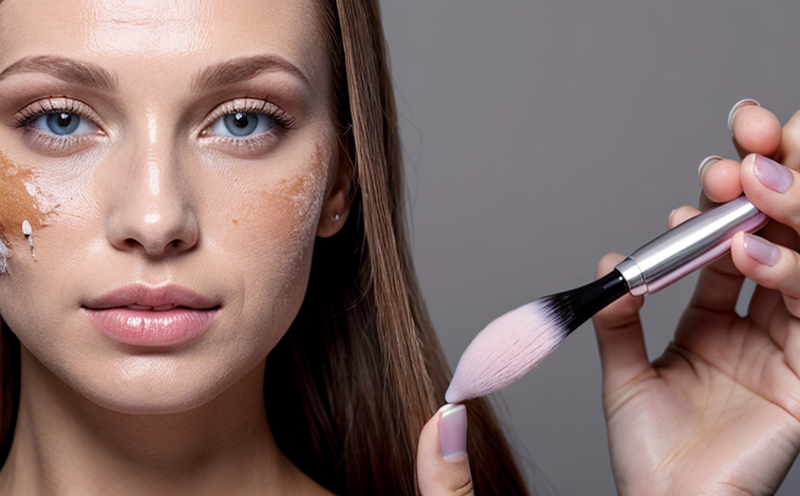Microplastic Restriction Compliance Testing in Cosmetics
The European Union's Directive 2018/852 on microplastics has brought unprecedented scrutiny to cosmetics and personal care products. This directive aims to protect the environment by restricting the use of intentionally added primary microplastics (less than 5 mm in diameter) in cosmetic products. Compliance with this regulation is essential for manufacturers, especially those operating within the EU or exporting to its markets.
The testing required under this directive involves several complex steps designed to ensure that any product sold contains no detectable levels of microplastics. This process typically begins with a detailed analysis of raw materials and ingredients used in formulations. It is crucial to understand which ingredients are likely to contribute to microplastic formation, as certain polymers or synthetic compounds may break down into these particles during manufacturing or use.
Once the product formulation has been finalized, further testing must be conducted on the finished goods. This includes dissolution tests where samples are subjected to various conditions meant to replicate real-world usage scenarios. These could range from high-pressure washes simulating showering behavior to prolonged exposure to sunlight and humidity that mimic outdoor storage environments.
The analytical methods employed for detecting microplastics vary depending on the size of the particles being sought after, but they generally involve advanced instrumentation such as scanning electron microscopy (SEM), Fourier transform infrared spectroscopy (FTIR), or Raman spectrometry. These techniques allow laboratories to identify and quantify even trace amounts of microplastic residues down to nanometer scales.
Given the stringent nature of these regulations, it is imperative that testing labs adhere strictly to ISO standards when performing analyses. For instance, ISO 14683 specifies procedures for sampling, preparation, characterization, and quantification of microplastics in water and sediments which can serve as a basis for similar protocols used on cosmetic products.
Compliance also extends beyond mere detection; it requires robust documentation practices to demonstrate adherence throughout the supply chain. This includes maintaining records of all raw material sources, manufacturing processes employed, and results obtained from each stage of testing. Such thoroughness ensures that even if challenges arise during inspections by regulatory bodies, there will be clear evidence supporting compliance efforts.
Understanding the nuances involved in this type of testing helps stakeholders make informed decisions regarding product development and sourcing strategies. By staying ahead of these evolving requirements through proactive measures like regular training for personnel handling analytical equipment, investing in state-of-the-art technology, and establishing strong relationships with trusted suppliers who meet high environmental standards, companies can ensure they remain compliant while continuing to innovate within their respective markets.
Eurolab Advantages
- Accurate Results: Leveraging state-of-the-art technology and methodologies, Eurolab guarantees precise detection of microplastics in cosmetics. Our team specializes in interpreting complex analytical data to provide actionable insights.
- Comprehensive Support: From initial consultation through final report, our experts offer full-service support tailored specifically to your needs. This includes assistance with formulation adjustments based on test outcomes and guidance on navigating regulatory requirements.
- Experience: With years of experience in environmental analysis, Eurolab's professionals bring deep knowledge of industry trends and best practices. This expertise translates into efficient problem-solving capabilities for clients facing challenges related to microplastic restrictions.
Quality and Reliability Assurance
At Eurolab, maintaining the highest standards of quality and reliability is non-negotiable. Our commitment extends from rigorous internal audits to continuous staff development programs aimed at staying abreast of technological advancements and evolving regulatory landscapes.
We employ ISO-certified personnel who adhere strictly to established protocols when performing microplastic detection tests. This ensures consistent accuracy across all analyses conducted in our laboratories worldwide. Additionally, we maintain up-to-date certification for the instruments used in these tests, ensuring they meet international standards set forth by organizations like ASTM and IEC.
The robust infrastructure supporting Eurolab's operations includes advanced analytical equipment capable of detecting microplastics at extremely low concentrations. Our facilities are equipped with sophisticated software that facilitates seamless data management and interpretation processes. This not only enhances efficiency but also improves the overall reliability of our reports.
Our reputation for delivering accurate, reliable results has been built on years of consistent performance. By partnering with Eurolab, clients can rest assured knowing their compliance testing needs are handled by experienced professionals dedicated to excellence in every aspect of service delivery.
Competitive Advantage and Market Impact
- Differentiation: Early adoption of microplastic detection protocols positions companies ahead of competitors, enhancing their reputation as leaders in sustainable practices.
- Innovation: Understanding the latest trends allows businesses to innovate effectively within this rapidly changing regulatory environment, potentially leading to new product developments or improved formulations.
- Consumer Trust: Demonstrating a strong commitment to environmental responsibility fosters trust among environmentally conscious consumers, driving brand loyalty and sales growth.
The ability to detect and eliminate microplastics from cosmetic products is increasingly becoming a differentiating factor in the beauty industry. As consumer awareness about environmental issues continues to rise, brands that prioritize sustainability will likely gain significant market share over those lagging behind in implementing necessary changes.
In addition to improved public perception, there are tangible benefits for companies adhering strictly to microplastic restriction regulations. These include reduced risk of recalls due to non-compliance, avoidance of costly fines imposed by regulatory bodies, and enhanced brand reputation which can translate into increased sales and customer loyalty.
Furthermore, early compliance efforts may open doors to new markets or partnerships that prioritize sustainability. By taking proactive steps now, companies position themselves not only for current compliance but also future developments in environmental regulations. Embracing these changes early ensures long-term success while contributing positively towards protecting our planet's health.





